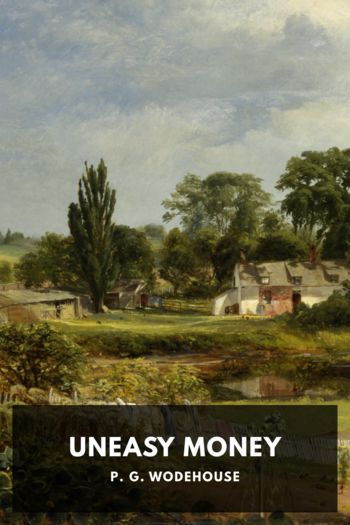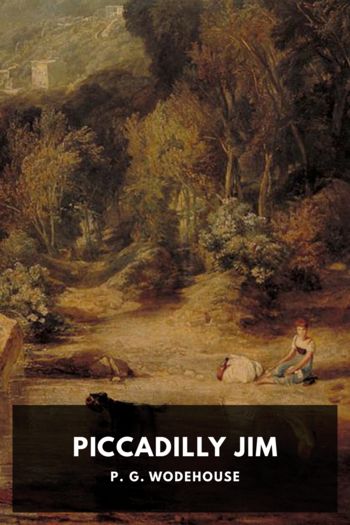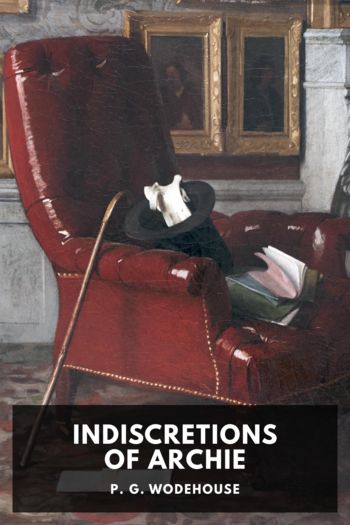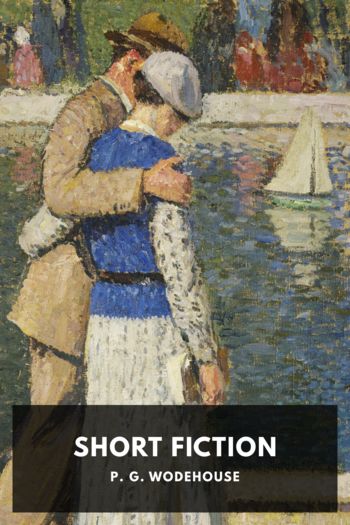
Description
Affable and honourable, Lord Dawlish is the second poorest peer in England, relying on his income as a club secretary. Claire Fenwick, his beautiful fiancée, will not marry him until he has some money, so he draws up plans to travel to New York and make his fortune. When he unexpectedly comes into an inheritance, he attempts to give it to the person he believes is the more deserving recipient. This, however, proves more difficult than expected.
Sir Pelham Grenville Wodehouse was an English author and one of the most widely read humorists of the twentieth century. After leaving school, he was employed by a bank but disliked the work and turned to writing in his spare time. His early writing mostly consisted of school stories, but he later switched to writing comic fiction, creating several regular characters who became familiar to the public over the years, such as Bertie Wooster and Jeeves.

Description
Piccadilly Jim, by P. G. Wodehouse, was first published on February 24, 1917 by Dodd, Mead and Company in New York. It was subsequently published in London in May 1918 by Herbert Jenkins. It is based on a story originally published in the Saturday Evening Post from September 16 to November 11, 1916. The book sees Jimmy Crocker, also known as “Piccadilly Jim,” trying to escape his increasingly bad reputation by returning to New York from London. On the way, he meets and falls in love with Ann Chester, and agrees to help her kidnap Ogden, her cousin, for his own good. Their plans go awry and become more convoluted as impersonations, explosives and a determined detective get in the way.

Description
Wodehouse once described his writing as “musical comedy without music,” and Love Among the Chickens is one of the earliest examples of his trademark style. The narrator, Jeremy Garnet, is a mild-mannered author attempting to finish his next novel in peace and quiet. Enter Stanley Ukridge, a man brimming with endless schemes, who draws the narrator into his latest, “the idea of a lifetime”—running a chicken farm.
With little practical knowledge, yet boundless ambition, they move to a country house and put the plan into action. Along the way, Garnet falls headlong in love with a woman on the train, and becomes consumed with winning her heart, despite formidable obstacles.
The original edition of Love Among the Chickens was published in the UK in 1906. This newer edition dates from 1921 and is described as “entirely rewritten by the author.” It is the first introduction in print of the character Ukridge, who would appear again in other short stories and novels by Wodehouse.

Description
Something New is the first novel of what became known as the “Blandings Castle Saga” by P. G. Wodehouse and was published in the United States in 1915. Two Americans, Ashe Marson and Joan Valentine, endeavor to retrieve a scarab pilfered from an American millionaire by the absent-minded Lord Emsworth. Marson and Valentine soon find themselves impersonating servants while evading the Efficient Baxter.
The story was originally serialized in the Saturday Evening Post as Something Fresh in 1915. It introduced who would become the recurring characters of Blandings Castle: Lord Emsworth, Freddie Threepwood, Rupert Baxter, and Sebastian Beach.

Description
Indiscretions of Archie is a comic novel adapted from a set of short stories serialized in the Strand magazine between March 1920 and February 1921 in the United Kingdom and between May 1920 and February 1921 in Cosmopolitan in the United States. The novel was first published in the United Kingdom on February 14, 1921 by Herbert Jenkins and in the United States on July 15, 1921 by George H. Doran.
The eponymous Archie is Archibald Moffam, a gaffe-prone but affable Englishman who has found himself living in New York City after the end of the First World War, in which he had served with distinction. After a whirlwind romance Archie marries Lucille, the daughter of wealthy hotel owner and art collector Daniel Brewster. Many of the ensuing events revolve around Archie’s attempts to win favor with his new father-in-law.

Description
P. G. Wodehouse was an incredibly prolific writer who sold short stories to publications around the world throughout his career. The settings of his stories range from the casinos of Monte Carlo to the dance halls of New York, often taking detours into rural English life, where we follow his wide variety of distinctive characters and their trials, tribulations and follies.
The stories in this volume consist of most of what is available in U.S. public domain, with the exception of some stories which were never anthologized, and stories that are collected in themed volumes (Jeeves Stories, Ukridge Stories, and School Stories). They are ordered by the date they first appeared in magazine form.

Description
In this, his first novel, P. G. Wodehouse offers a glimpse into the insular world of an English public school scandalized by a recent burglary of its prized sports trophies (“pots”) from its cricket pavilion. At first an overzealous master unjustly accuses one of the schoolboys, who happens to be in need of cash to pay a gambling debt owed to his brother. But, thanks to a Scotland Yard inspector brought in especially for the case, the boy is cleared and his promising career among the elite is left intact.
Along the way, Wodehouse gives snapshots of the everyday lives of various boys: from dealing with the idiosyncrasies of fellow students, to collecting birds’ eggs and sneaking a smoke in the nearby woods while avoiding capture by gamekeepers, to cranking out an underground magazine to raise needed funds. Through it all, the boys, along with their headmaster, handle things with wit and aplomb. Consistent with a worldview in which a man “should be before anything else a sportsman,” sporting contests figure prominently: a boy rises from the canvas to score an unexpected knockout, and another graciously accepts his last-second defeat at the finish line.

Description
Jeeves Stories is a collection of humorous short stories by P. G. Wodehouse that feature the adventures of his most famous characters, Jeeves and Wooster. Wooster is a wealthy and idle young English gentleman of the interwar era. Jeeves is his extraordinarily competent valet whose name has since become synonymous with perfect service. The stories follow Wooster in his wanderings about London, around England, and across the Atlantic to New York, with Jeeves following in his wake and striving to keep his employer well-groomed and properly presented. Along the way Jeeves must somehow also manage to extricate Wooster and his friends from the various scrapes and follies they get themselves into.
First published as early as 1915, the stories first appeared on both sides of the Atlantic in publications like The Saturday Evening Post and The Strand Magazine. They were later collected into books or reworked into novels. Though only less than 50 of Wodehouse’s over 300 short stories feature Jeeves and Wooster, they remain his most enduring characters. They’ve been copied, imitated, and featured in countless interpretations and adaptations. A century later, these stories still are as amusing and entertaining as they were when they were first published.

Description
Right Ho, Jeeves is the second novel to feature P. G. Wodehouse’s popular Bertie Wooster and Jeeves characters. Bertie, a member of the English upper class and one of the “idle rich,” tries his best to arrange relationships between two pairs of his friends. Though he means well, Bertie’s bumbling attempts wind up doing more harm than good (as usual), leaving it to his valet, Jeeves, to see if he can sort things out.
A smooth, easy, and often hilarious read, Right Ho, Jeeves is an excellent example of why Bertie Wooster and Jeeves have become such iconic literary figures.

Description
School Stories is a collection of humorous short stories by P. G. Wodehouse that feature the trials, tribulations and adventures of the denizens of the turn-of-the-century English boarding school.
First published in schoolboy magazines starting in 1901, the stories originally appeared in publications like The Captain and Public School Magazine. Some were also later collected into books. These stories, written more than a decade before he moved on to his more famous characters like Jeeves and Wooster, represent Wodehouse’s first magazine sales and showcase his early career. While some of these stories are definitely of a moment, they’re filled with delightful bits that would be instantly recognizable to students and teachers of any age. Indeed, the stories experienced a bit of a resurgence in the latter part of the 20th century, and remain a worthy part of Wodehouse’s canon.